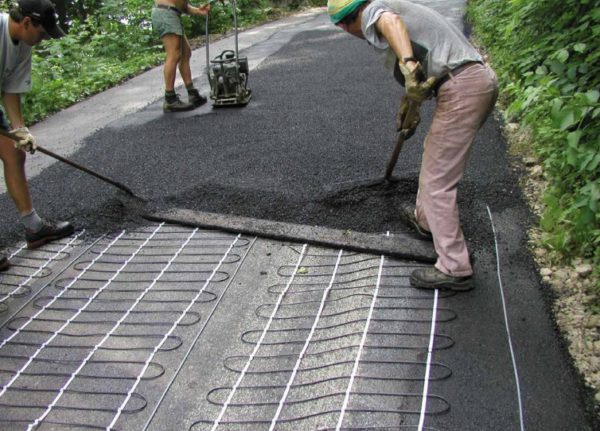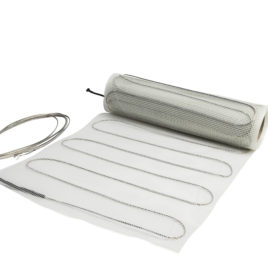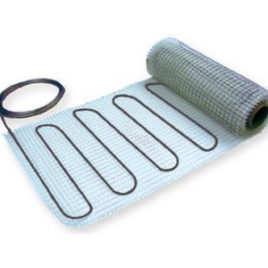Description
Open area heating for installation in rolled asphalt. ST is used to keep car park entrance ramps, emergency access routes, entrance areas, etc. free from snow and ice.
The heating mats are laid on a load-bearing under-layer (asphalt or concrete) in accordance with a laying plan. Subsequently the first layer is built up: poured on, manually distributed and consolidated.
The top layer is coated in the second process step.
The temperature of the rolled asphalt is 180°C. The minimum thickness of the asphalt is 6 cm (2 x 3 cm).
Grain size of the base-layer: 0–8mm
Grain size of the top-layer: 0–8mm or 0–11mm.
The joint cross web and only one access line simplify the installation of the heating mats.




















